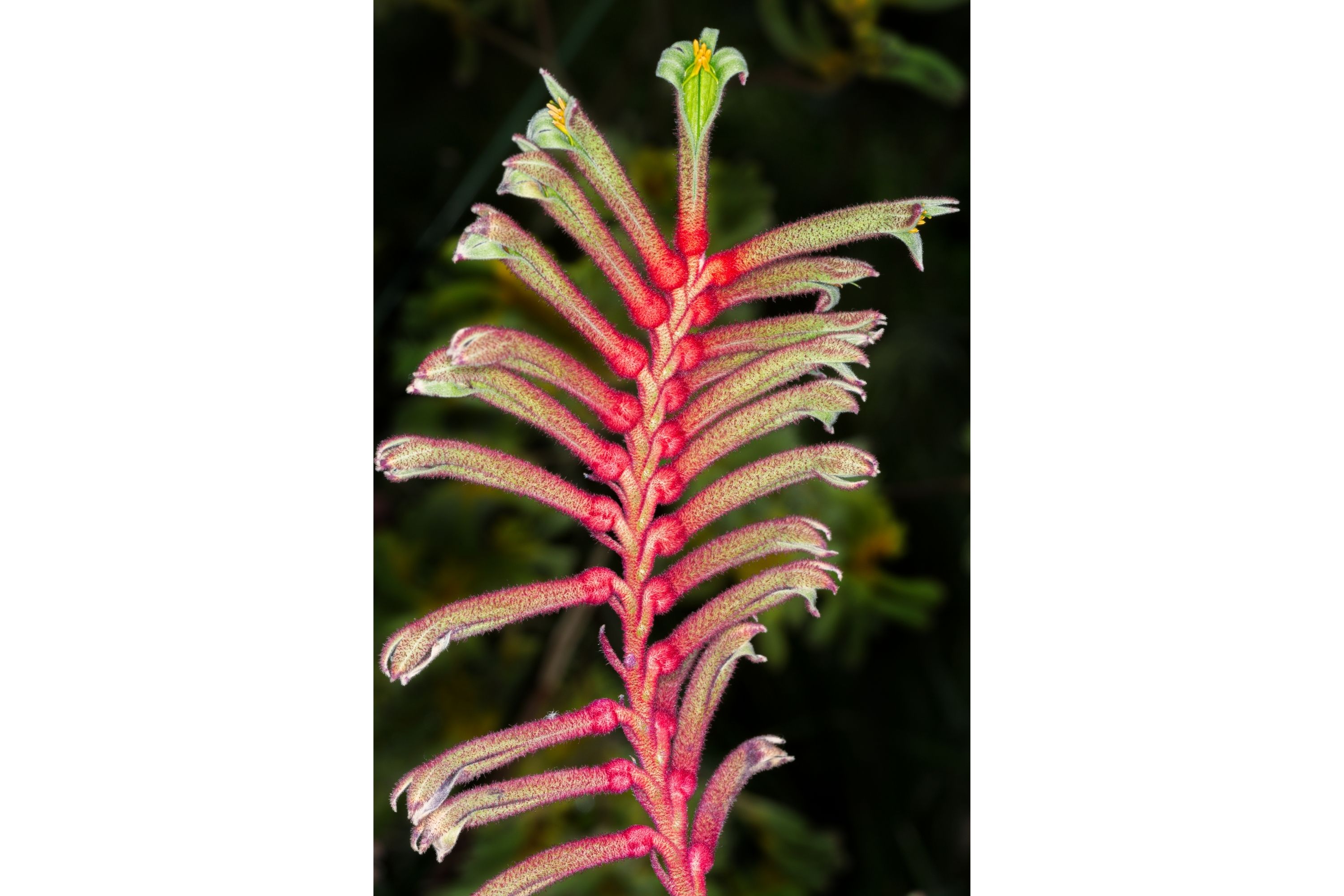Albany cat's paw
(Anigozanthos preissii)

Description
Anigozanthos preissii, the Albany cat's paw, is a herbaceous plant species in the family Haemodoraceae, endemic to Western Australia. The species is an upright perennial herb, with long leaves that emerge from a rhizome beneath the soil. A tall stalk emerges from the centre of these to present large red, orange and yellow flowers. The flowering period is sometime between October to November, when attains a height up to 0.8 metres. The leaves grey-green and arranged in a rosette at ground level. It occurs in a range to the north and east of Albany, especially in the Warren region, along the southern coast of Southwest Australia. Anigozanthos preissii was first described by Stephan Endlicher, in Lehmann's Plantae Preissianae, using the variant spelling Anigosanthus. The epithet is named for the botanist Ludwig Preiss. Anigozanthos is a genus of Southwest Australian plants of the bloodwort family Haemodoraceae. The 11 species and their subspecies are commonly known as kangaroo paw or catspaw, depending on their size, and the shape and color of their flowers. A further species, previously identified as Anigozanthos fuliginosus (black kangaroo paw), was separated to a monotypic genus as Macropidia fuliginosa. The species are recognised by their unusual flowers, numerous hybrids have been developed for cultivation and floristry. The red-and-green kangaroo paw is the floral emblem of Western Australia. These perennials are endemic to dry sandy, siliceous areas of southwest Australia, but they occur as well in a variety of other environments and soil types. They are grown commercially in Australia, the United States, Japan and Israel. The plant grows from short, underground, horizontal rhizomes. The length and the character of these may vary between the species: some are fleshy, others are fragile. The sap in the root system allows the plants to survive extreme dry spells. In summer, a number of species die back to the rhizome, growing back in autumn. The plants have a basal rosette of long green to greyish-green leaves. The leaves of some species are hairy. From the heart of this roset merge long leafless stalks, which can reach 2 m, ending in a raceme of flowers.
Taxonomic tree:







